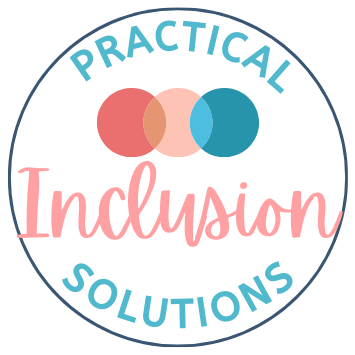Behavior is one of the most important aspects of any classroom—it can make or break a lesson. Yet, many teachers feel overwhelmed when trying to address student behavior in a positive way, while others may resort to overly punitive measures, which can harm relationships and trust.
With so many things to juggle each day, how can teachers focus on implementing positive behavior supports in the classroom? This post will provide practical strategies for encouraging positive behavior and building a supportive learning environment.
Why Is a Positive Approach to Behavior Support So Important?
A positive approach to behavior is key to creating an effective, inclusive, and supportive classroom. Focusing on positive behavior directly impacts students’ academic, social, and emotional development. Here’s why it’s crucial to approach behavior in a positive way:
- Promotes a safe and supportive environment
- Encourages intrinsic motivation
- Builds strong teacher-student relationships
- Reduces negative behavioral patterns
- Supports social and emotional development
- Fosters a growth mindset
- Promotes inclusivity and equity
- Enhances academic engagement
- Helps reduce teacher stress and burnout
By focusing on and reinforcing what students do well, teachers can create an environment that leads to long-term success—both in and out of the classroom. A positive behavior strategy not only benefits students, but also reduces stress for teachers, fosters inclusivity, and improves overall outcomes. Just as learning to differentiate instruction and modify curriculum is important for inclusion, so is positive behavior management.
How Can Teachers Implement Positive Behavior Supports in the Classroom?
1. Establish Clear Expectations and Routines
How many times have you heard, “Well, I didn’t know”? Consistent routines and clear expectations help all students, especially those with autism or learning disabilities, understand what is expected of them. Phrasing expectations positively (e.g., “raise your hand” instead of “don’t call out”) and using visuals can support students with different learning styles.
Practical Example: At the start of the school year, a teacher sets clear behavior and academic expectations. Students enter the classroom, put their belongings away, and begin a “Do Now” activity. The teacher reviews expectations like raising hands to speak, listening to peers, and staying on task. These routines are consistently practiced so students know what to do without constant reminders.
2. Use Positive Reinforcement
Positive reinforcement encourages the behaviors you want to see while building a strengths-based classroom culture. Reward positive behavior with praise, tokens, or privileges—whether that’s verbal praise, a tangible reward, or a class-wide incentive system. For example, some teachers use “kindness points” toward a class reward, while others might use apps like ClassDojo or even a simple jar of pom poms.
Practical Example: A teacher praises a student for helping a peer pick up fallen books: “Thank you for being so kind, Emily. That shows great leadership!” The student then earns a sticker or a point toward a class reward. Observing this, another student may also start helping others, hoping for similar recognition.
3. Provide Specific and Constructive Feedback
When students demonstrate positive behavior, offer specific feedback. Instead of generic praise, let students know exactly what they did well, such as “Great job raising your hand before speaking” or “I’m impressed by how you stayed focused during independent work.” This kind of feedback helps students understand what behaviors are valued and encourages self-regulation. We’ll be honest, if your specific feedback comes in the form of “I love how you kept your middle finger down when you didn’t like my answer”… that counts!!
Practical Example: After a student submits a math assignment with a few errors, the teacher gives specific feedback: “You did an excellent job on the first five problems, especially setting up your equations. For problems 6 and 7, double-check your multiplication steps to catch the errors.” This feedback guides the student in correcting mistakes, not just pointing them out.
4. Foster Peer Support and Social Interactions
Peer support plays a critical role in developing social and emotional skills. Positive peer interactions promote inclusivity and community, which is especially important for students with disabilities who may struggle with social skills. Pairing students with peers who model appropriate behavior can foster academic and behavioral growth.
Practical Example: During group projects, a teacher intentionally mixes students with different strengths. For instance, a student who excels in reading might be paired with one who is good at organizing ideas. The teacher encourages students to help each other, saying, “Remember, you’re working together—share your strengths and support each other through challenges.”
5. Use Proactive Classroom Management Strategies
Proactive classroom management helps prevent disruptions by addressing potential issues before they escalate. When students feel they have more control over their actions, they’re more likely to engage in positive behavior. Strategies like using non-verbal cues, breaking tasks into smaller steps, and offering choices can help prevent misbehavior.
Practical Example: A teacher sets up a “calm corner” where students can go to de-escalate if they feel upset. The teacher explains its purpose at the beginning of the year: “If you feel frustrated, go to the calm corner, take deep breaths, or read a book. It’s a space to help you reset and get back to learning.” This proactive approach prevents emotional issues from escalating into behavioral problems.
Conclusion
These strategies are just a few examples of how to implement practical positive behavior supports in the classroom. Have you tried any of these techniques? If you’re looking for more ideas, check out these helpful resources:
✅ 13 Tips on Promoting Positive Behavior in Inclusive Classrooms
✅ How to Encourage Positive Behaviours in an Inclusive Classroom
By focusing on positive behavior supports in the classroom, teachers can create an environment that nurtures student growth and well-being, leading to success both in and out of the classroom.
